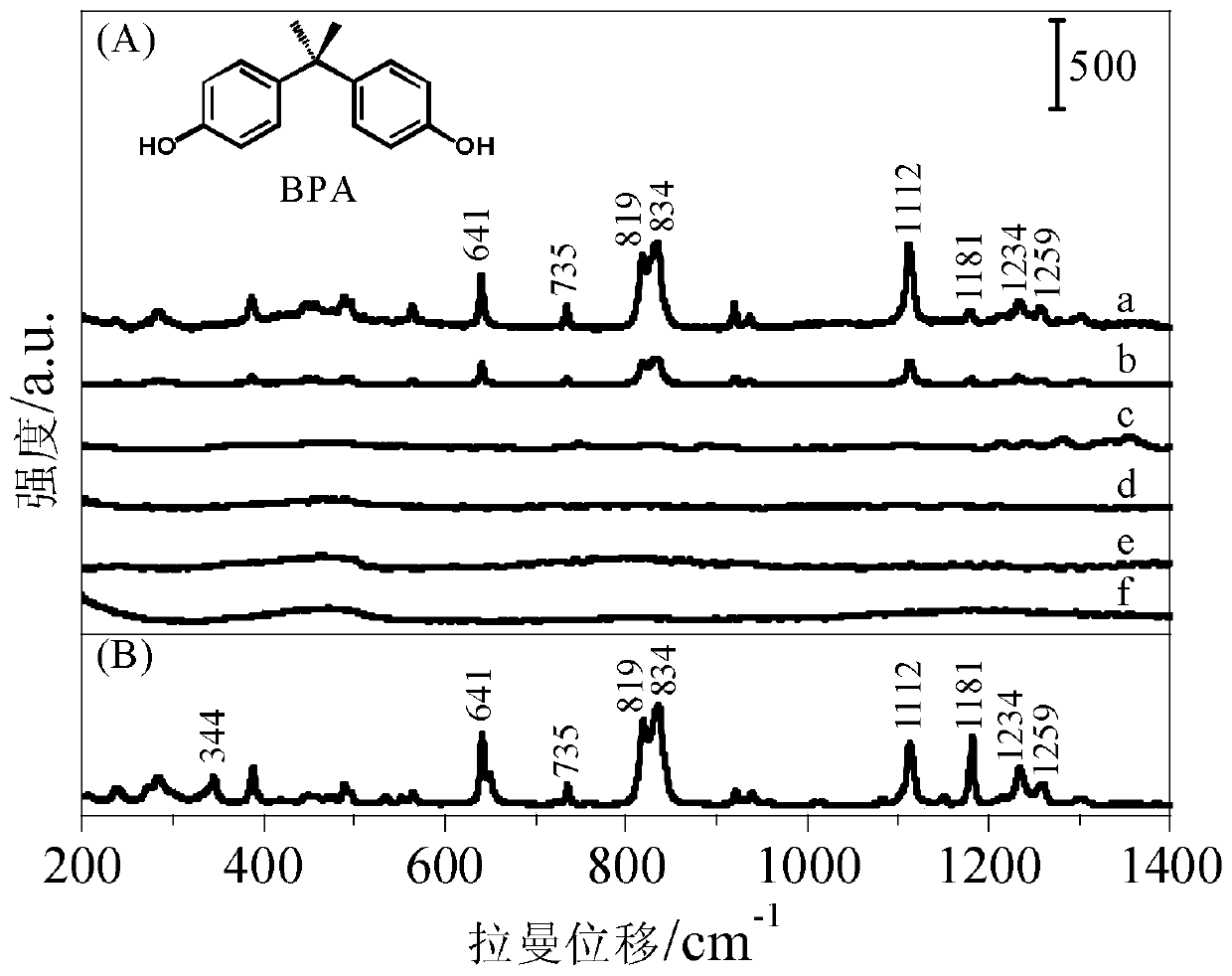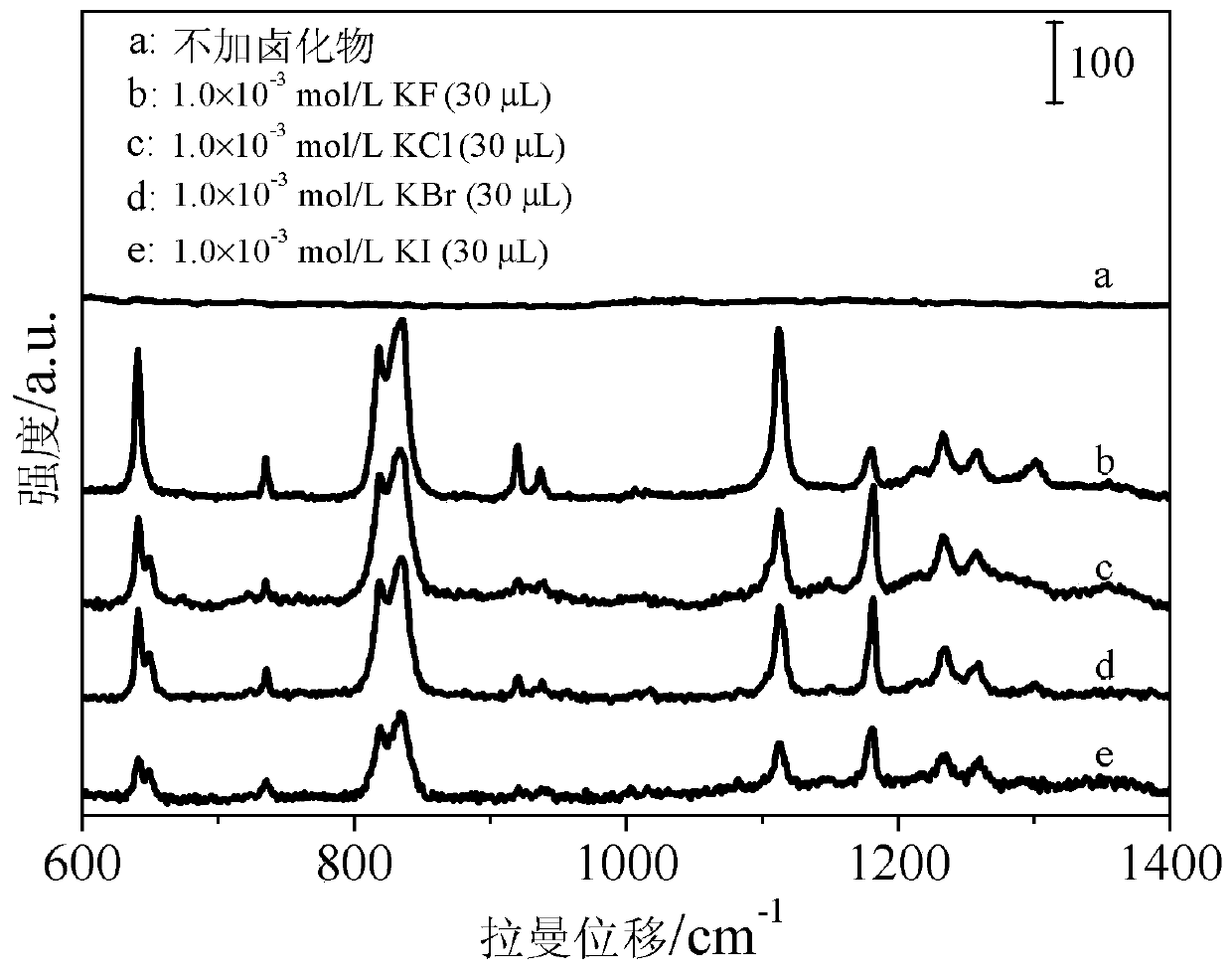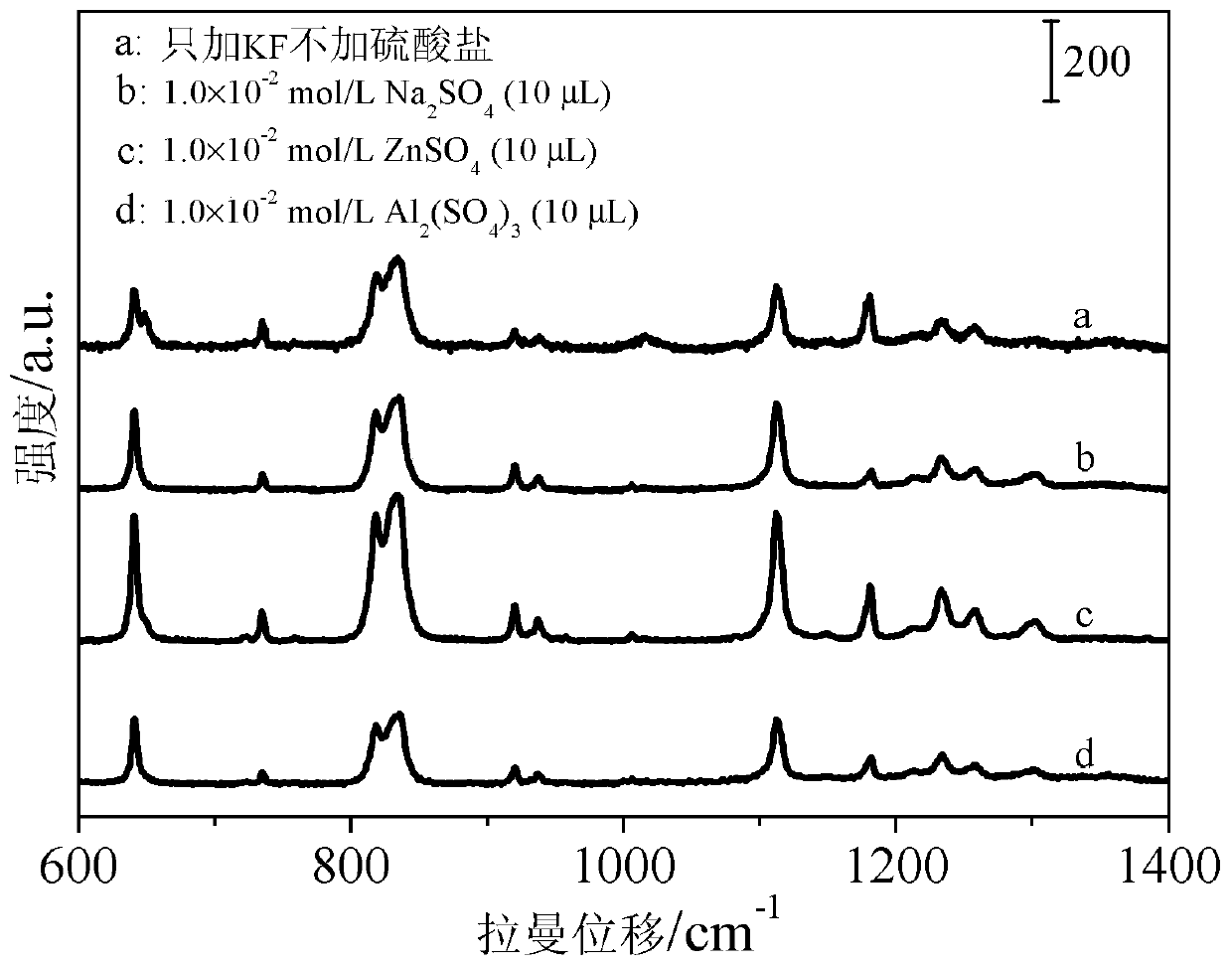A surface-enhanced Raman detection method for bisphenol A residues in milk
A surface-enhanced Raman and detection method technology, applied in Raman scattering, preparation of test samples, material excitation analysis, etc., can solve the problems of complex pretreatment and high cost, and achieve improved sensitivity, less sample volume, and rapid detection Effect
- Summary
- Abstract
- Description
- Claims
- Application Information
AI Technical Summary
Problems solved by technology
Method used
Image
Examples
specific Embodiment approach 1
[0021] Embodiment 1: The surface-enhanced Raman detection method of bisphenol A residue in milk according to the present embodiment is carried out according to the following steps:
[0022] 1. Prepare a gold nanoparticle (Au NPs) sol, and then modify the Au NPs with a halide aqueous solution to obtain a halide-modified Au NPs-modified substrate with SERS activity;
[0023] 2. Add methanol / water mixed solvent with a volume ratio of 3:1 to the milk sample to be tested, ultrasonically treat for 1-3 minutes, then centrifuge for 8-15 minutes, remove the supernatant and evaporate to dryness naturally at room temperature to obtain the residue ; Add methanol / water mixed solvent with a volume ratio of 3:1 to the residue and ultrasonically treat it for 1 to 3 minutes, then centrifuge for 5 to 8 minutes, remove the supernatant, and use 0.45 μm and 0.22 μm aqueous membranes in sequence The supernatant is filtered to obtain the supernatant of the milk sample to be tested;
[0024]3. The h...
specific Embodiment approach 2
[0026] Embodiment 2: This embodiment differs from Embodiment 1 in that in step 1, a gold nanoparticle (Au NPs) sol is prepared, and then the Au NPs are modified with an aqueous halide solution to prepare halide-modified Au with SERS activity. The specific steps of NPs modified substrate are as follows:
[0027] a. Add 1 mL of 1% HAuCl 4 Add it into a three-necked flask with 99mL of deionized water, and heat it under magnetic stirring to dissolve it; when the solution is heated to a boiling state of 94°C, add 4mL of a 1% sodium citrate aqueous solution in the three-necked flask. The solution gradually changed from colorless and transparent to lavender and purple, and finally a wine-red transparent sol was formed; the transparent sol was kept at a slight boiling state at 96°C for 15 minutes, then stopped heating, and cooled naturally to room temperature to obtain gold sol;
[0028] b. Centrifuge the Au NPs sol to obtain the Au NPs concentrate; fully mix the halide aqueous solut...
specific Embodiment approach 3
[0029] Specific embodiment 3: The difference between this embodiment and specific embodiment 2 is: in step b, the centrifugation time is 5-10 min, and the centrifugation speed is 5000-10000 rpm; the volume ratio of Au NPs concentrate and halide aqueous solution is mixed 1:1. Others are the same as in the second embodiment.
PUM
 Login to View More
Login to View More Abstract
Description
Claims
Application Information
 Login to View More
Login to View More - R&D Engineer
- R&D Manager
- IP Professional
- Industry Leading Data Capabilities
- Powerful AI technology
- Patent DNA Extraction
Browse by: Latest US Patents, China's latest patents, Technical Efficacy Thesaurus, Application Domain, Technology Topic, Popular Technical Reports.
© 2024 PatSnap. All rights reserved.Legal|Privacy policy|Modern Slavery Act Transparency Statement|Sitemap|About US| Contact US: help@patsnap.com










